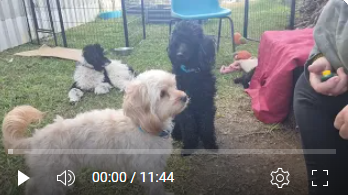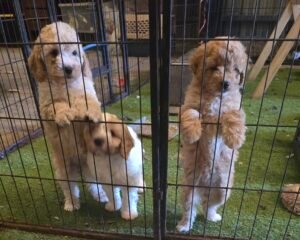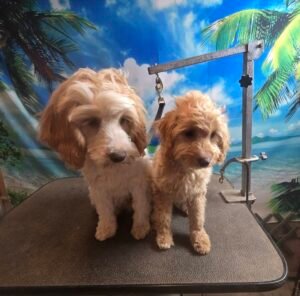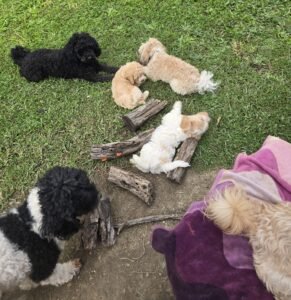Where have I come from as a trainer?
What methods do I use to train animals?
Where am I going in my career as an animal communicator and trainer?
These are all important questions that all animal trainers should be able to answer for you as a client.
I first started training animals as a very small child, fascinated by them; I loved to see if I could teach the family budgie to talk and to carry on long involved conversations with the cats and my imaginary animal friend a beautiful black panther. At the age of 8 or so the family got its first dog Lisa, a lovely placid black Labrador. Thankfully she was so placid, as I groomed her for hours and spent day after day making up simple agility courses and taking her for endless walks with never ending sit, wait and say commands. Poor dog I know so many more fun things now. At this age I was obvious to the wonderful world of dog sports that existed, at the time in Australia that was obedience and conformation shows as agility had not really taken off yet. Now there are so many types of dog sports you can participate in including flyball, frisbee, dock diving, lure coursing, sledding and so many more on their way out from the United States such as nose games.
In 1984 i got the first of my dogs, a pedigree Chow Chow called Chi. She is the dog that first introduced me to positive reward based training and learning how to think outside the square when working with a difficult dog. Chi was a wonderful dog, in the 16 years she spent with me, but she invented the word stubborn and if she didn’t want to do it no amount of jerking on a check chain, dragging her around or forcing her into a sit worked. She just planted her feet and that was that. Searching around I managed to find a private trainer in Sydney that was years ahead of others in the area of training dogs and she taught me so much. Unfortunately my aim to get Chi titled in obedience never eventuated as she had chronic knee ligament issues and spent so much of her life having surgery. She remained, until senility set in, a wonderful dog to live with, walked like a dream on a lead and was incredibly good at all the basic commands. I remember at one of the very big dog obedience clubs in Sydney (that shall remain nameless) the chief instructor, a dog trainer from the old jerk and check brigade challenged me as to why I had not been able to train this dog. Wordlessly I handled him the lead and stood back to watch darling Chi plant all her feet, look away from him and refuse to do anything he wanted. I was stifling laughter as he handed back her lead and advised me to get another dog as she was un-trainable.
In 1986 I got my first Belgian Shepherd and ventured into the conformational show world. It was interested to see the great results being gained by a few handlers who used a treat to get the dog to stand where they wanted and behave in the way to best show themselves off, a technique known as baiting. That appealed to me as a far calmer, nicer way of interacting with my dog and hundreds of kilos of dried liver later I showed Belgian Shepherds as much as time permitted until 2009. Never achieving tremendously great heights in show world but I did enjoy being with other like minded dog people and being out in the fresh air at weekends with my dogs and learning more and more about other breeds and what made them behave the way they do.
Meanwhile, my husband and I split up following my becoming disabled in a car accident. As a result I had to leave life as a sales representative working horrendous hours per week in Sydney, move to the Nambucca Valley and re-invent myself personally and professional. Obviously a hobby business as a dog groomer while single parenting my daughter made a lot of sense. Never content not to improve myself I studied and learn all I could about grooming and of course every time I had a dog on a lead I trained it. Training is in fact not about a set hour training session each week but about doing the same thing the same way over and over and over again.
Shifty a big 8 year old cream Labrador that I have been grooming fortnightly for 10 years demonstrates this beautifully. Each time I arrive I set up the trailer, water in the bath, door open, lead out, go down to the gate, ask him to sit, open the gate, put the lead on him and lead him up to the trailer. With the words “in you go” he obediently jumps into the bath and turns around to wait for me to take his lead and collar off. When I have finished washing one side I say turn and he turns in the bath to present the other side. As soon as the wash is over he stands waiting for me to pick up his treat, return him to his backyard where he sits automatically to get the treat. Did I teach him any of this? No not deliberately, I just did the same thing the same way with the same cue words every time and he learned the routine about 5 years ago. This is positive reward based training at work.
So many people have asked me for advice on their pets over the ten years and having really enjoyed producing the All Things Animals Program for 2NVR 105.9FM and with my daughter now about to spread her wings and leave home it was time to re-invent myself again and study as a professional dog trainer.
Over the last 42 years of living with dogs and cats I have tried every training technique available, with the exception of prong and shock collars, as I was never convinced that they were humane. But yes I have used jerk and release on check chains, pushing a dog’s rear end down for a sit, standing on the lead to try and get a drop and citronella spray collars to try and stop barking. I never got terribly good results as I have always owned smart dogs that can’t be made to do what they don’t want to do. Time wise I was too busy raising a child, working and then coping with disability to do more than the occasional conformation show (where I always used treats). During this time, two dogs I still own were instrumental in moving me towards clicker training as a training method. Mistral (Tervueren) and Cherry (Miniature Poodle) are both reactive dogs, pig headed they bark and carry on at a leaf dropping off a tree. Both of them showed me all the tricks dogs can use to make a citronella collar useless. Both of them used to be a nightmare to live with. Many other people would have placed these two in a shelter for “rehousing – read euthanasia”. Luckily I live on property and these two dogs were just the challenge I needed to develop me as a true dog trainer who could really understand dogs and how they think.
I happened across a very interesting book called “Click for Joy” written by a wonderful dog trainer and author, Melissa Alexander. On my own I attempted to work on some of these techniques with Mistral, even brought a clicker but was not successful as it was very hard to untrain my cross over habits. Having decided to train professionally as a trainer however I was committed to becoming one that only used positive reward based techniques and that lead me to the Delta Society Australia and their Certificate IV in Companion Animal Services. In this course I was lucky to have been introduced to some trainers that are true animal communicators. People who have endless patience and skill working with animals, two of which are Kerry Haynes-Lovell and Carmel (aka Fudge the dog trainer) and watching these two ladies work with animals is awe inspiring. During this time I also worked on techniques I learned not only with my two problem children, Mistral and Cherry but also with my other dogs and many customers’ dogs I have been employed to train. I also implemented the techniques in my grooming practice and the results have been sensational. Dog after dog is transformed, yes even Cherry and Mistral. I have worked with 4 week old poodle puppies and the results far surpass anything I have ever achieved in 42 years of all the training I have done with many animals. They say there is nothing like a reformed smoker or alcoholic and that’s me a reformed trainer achieving results I never knew were imaginable with problem dogs.
I really wish I had learned these techniques so many years earlier as working with dogs that are clicker trained in a positive reward based training technique is so much fun and ……….so easy to do. The results are so much better than any other training method I have ever used and happen so fast.
Where am I going from here as a trainer?
I read extensively on the net and view videos of leading trainers in the US and UK and the science of dog training and animal communication is changing rapidly as more and more knowledge of how to get the best possible lifestyle for our companion animals is explored. There are Animal Behaviour facilities attached to top Universities in America that are undertaking more and more research into how animals learn and how we can better communicate with them. Hopefully my long term goal is to travel to American and work with some of these inspirational people but until then thanks heavens for YouTube and the Internet. In the meantime I have a great time bring these changes to the lives of my clients and their dogs.


Kareema
Healing Energy Animals
Kareema is the owners of Healing Energy Animals where devil dogs, horrible horses and crazy cats are turned into perfect pets using Relationship Animal Training and over 50 years of experience training a wide variety of animals.
Healing Energy Animals provides owners and pet professionals assistance with with common pet behavior training, feeding and grooming issues such as barking, escaping, scratching, aggression and fleas. Kareema consults and writes widely on a range of pet care issues for owners and also assists pet care professionals in setting up and growing their businesses by the provision of customer handling advice, sales and marketing strategies and up to date product information that allows for the differentiation of their pet care business from their competitors.
Healing Energy Animals is an Australian business but operates worldwide via the provision of virtual services.








